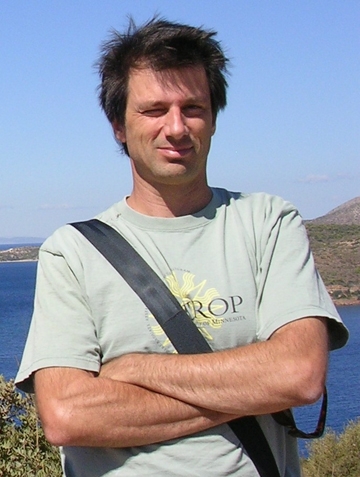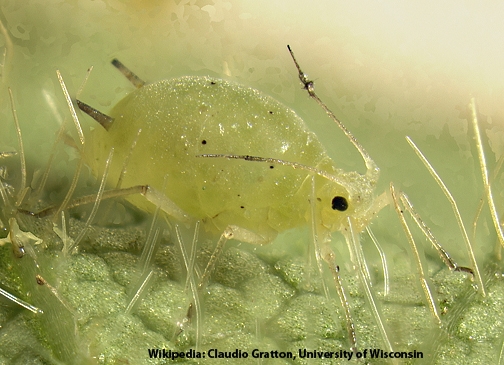
As its name implies, it's native to Asia. It was first detected in North America in Wisconsin in July 2000. Technically, it’s Aphis glycines Matsumura. In lay language, that's spelled "p-e-s-t."
Now found throughout much of the Midwest, it sucks.
Plant juices.
With its mouthparts.
Enter George Heimpel, professor of entomology at the University of Minnesota's Department of Entomology. Heimpel, who received his doctorate in entomology in 1995 from UC Davis, will return to the UC Davis campus Wednesday, Dec. 4 to speak on “Specificity and the Process of Biological Control Using Aphid Parasitoids."
His seminar takes place from 4:10 to 5 p.m. in 122 Briggs Hall. It is scheduled to be recorded for later posting on UCTV. (Editor's Note: The seminar was initially scheduled for noon, but due to midwest storms, Heimpel's flight was delayed.)
"Over the past 25 years or so, importation ('classical') biological control of arthropod pests has undergone a paradigm shift in which emphasis has shifted from an exclusive focus on efficacy to a focus on the actual and potential risks of biological control introductions," Heimpel says. "Host specificity testing is the cornerstone of risk assessment in this new paradigm, and only highly specialized agents are currently approved for release. Here, I describe the process of importation biological control of an invasive agricultural pest in the North-Central U.S.--the Asian soybean aphid."
"Numerous parasitoid species were imported from Asia as potential biological control agents and I focus on five species for which host-specificity testing was done," he says. "Each of these three species tells a different story in terms of host-specificity, the potential for biological control efficacy, and actual success of field releases. Together, these case studies illustrate some potential relationships between safety and efficacy in biological control, and the importance of various traits in mediating safety and efficacy of biological control agents."
Born in Germany, Heimpel grew up mainly in California. He received his bachelor’s degree in conservation and resource studies in 1988 from UC Berkeley and his master's degree in 1991 in entomology and applied ecology from the University of Delaware before heading over to Jay Rosenheim's lab at UC Davis to receive his doctorate in 1995. Heimpel then spent two years as a USDA post-doctoral fellow at the University of Wisconsin in Mike Strand’s lab.
Heimpel now teaches biological control and insect behavior.
And one of his targets is the Asian soybean aphid.
That sucks...
Attached Images:
